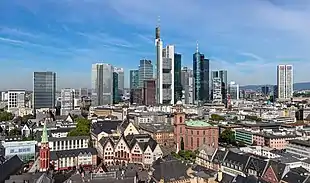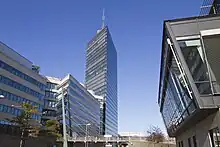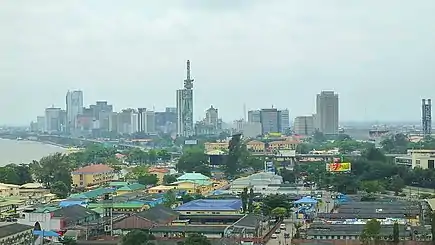Portal:Business/Selected economy
These are articles that are selected for the "Selected economy" slot within the Business and economics portal.
Selected economy 1
Portal:Business/Selected economy/1

Selected economy 2
Portal:Business/Selected economy/2

Selected economy 3
Portal:Business/Selected economy/3
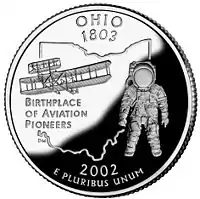
Selected economy 4
Portal:Business/Selected economy/4
The economy of Hong Kong is a highly developed free-market economy. It is characterised by low taxation, almost free port trade and a well-established international financial market. Its currency, called the Hong Kong dollar, is legally issued by three major international commercial banks, and is pegged to the US dollar. Interest rates are determined by the individual banks in Hong Kong to ensure that they are market driven. There is no officially recognised central banking system, although the Hong Kong Monetary Authority functions as a financial regulatory authority.
Its economy is governed under positive non-interventionism, and is highly dependent on international trade and finance. For this reason it is regarded as among the most favorable places to start a company. In fact, a recent study shows that Hong Kong has come from 998 registered start-ups in 2014 to over 2800 in 2018, with eCommerce (22%), Fintech (12%), Software (12%) and Advertising (11%) companies comprising the majority. The Economic Freedom of the World Index listed Hong Kong as the number one territory, with a score of 8.59, in 2020. (Full article...)
Selected economy 5
Portal:Business/Selected economy/5
The economy of Singapore is a highly developed free-market economy with dirigiste characteristics. Singapore's economy has been consistently ranked as the most open in the world, the joint 4th-least corrupt, and the most pro-business. Singapore has low tax-rates and the highest per-capita GDP in the world in terms of purchasing power parity (PPP). The Asia-Pacific Economic Cooperation (APEC) is headquartered in Singapore.
Alongside the business-friendly reputation for global and local privately held companies and public companies, various national state-owned enterprises play a substantial role in Singapore's economy. The sovereign wealth fund Temasek Holdings holds majority stakes in several of the nation's largest bellwether companies, such as Singapore Airlines, Singtel, ST Engineering and Mediacorp. With regards to foreign direct investment (FDI), the Singaporean economy is a major FDI outflow-financier in the world. In addition, throughout its history, Singapore has benefited from the large inward flows of FDI from global investors, financial institutions and multinational corporations (MNCs) due to its highly attractive investment climate along with a stable and conducive political environment throughout its modern years. (Full article...)
Selected economy 6
Portal:Business/Selected economy/6
The economy of the European Union is the joint economy of the member states of the European Union (EU). It is the third largest economy in the world in nominal terms, after the United States and China, and the third one in purchasing power parity (PPP) terms, after China and the United States. The European Union's GDP estimated to be around $16.6 trillion (nominal) in 2022 representing around one sixth of the global economy. Germany has by far the biggest national GDP of all EU countries, followed by France and Italy.
The euro is the second largest reserve currency and the second most traded currency in the world after the United States dollar. The euro is used by 20 of its 27 members, overall, it is the official currency in 26 countries, in the eurozone and in six other European countries, officially or de facto. (Full article...)
Selected economy 7
Portal:Business/Selected economy/7
The economy of the Republic of Ireland is a highly developed knowledge economy, focused on services in high-tech, life sciences, financial services and agribusiness, including agrifood. Ireland is an open economy (3rd on the Index of Economic Freedom), and ranks first for high-value foreign direct investment (FDI) flows. In the global GDP per capita tables, Ireland ranks 2nd of 192 in the IMF table and 4th of 187 in the World Bank ranking.
Following a period of continuous growth at an annual level from 1984 to 2007, the post-2008 Irish financial crisis severely affected the economy, compounding domestic economic problems related to the collapse of the Irish property bubble. Ireland first experienced a short technical recession from Q2-Q3 2007, followed by a recession from Q1 2008 – Q4 2009. (Full article...)
Selected economy 8
Portal:Business/Selected economy/8
The economy of Libya depends primarily on revenues from the petroleum sector, which represents over 95% of export earnings and 60% of GDP. These oil revenues and a small population have given Libya one of the highest nominal per capita GDP in Africa.
After 2000, Libya recorded favorable growth rates with an estimated 10.6% growth of GDP in 2010. This development was interrupted by the Libyan Civil War, which resulted in contraction of the economy by 62.1% in 2011. After the war, the economy rebounded by 104.5% in 2012. It crashed again following the Second Libyan Civil War. As of 2017, Libya's per capita PPP GDP stands at 60% of its pre-war level. (Full article...)
Selected economy 9
Portal:Business/Selected economy/9
The economy of India has transitioned from a mixed planned economy to a mixed middle-income developing social market economy with notable public sector in strategic sectors. It is the world's fifth-largest economy by nominal GDP and the third-largest by purchasing power parity (PPP). According to the International Monetary Fund (IMF), on a per capita income basis, India ranked 139th by GDP (nominal) and 127th by GDP (PPP). From independence in 1947 until 1991, successive governments followed Soviet model and promoted protectionist economic policies, with extensive Sovietization, state intervention, demand-side economics, natural resources, bureaucrat driven enterprises and economic regulation. This is characterised as dirigism, in the form of the Licence Raj. The end of the Cold War and an acute balance of payments crisis in 1991 led to the adoption of a broad economic liberalisation in India and indicative planning. Since the start of the 21st century, annual average GDP growth has been 6% to 7%. The economy of the Indian subcontinent was the largest in the world for most of recorded history up until the onset of colonialism in early 19th century. India accounts for 7.2% of the global economy in 2022 in PPP terms, and around 3.4% in nominal terms in 2022. (Full article...)
Selected economy 10
Portal:Business/Selected economy/10 } The economy of Ghana has a diverse and rich resource base, including the manufacturing and exportation of digital technology goods, automotive and ship construction and exportation, and the exportation of diverse and rich resources such as hydrocarbons and industrial minerals. These have given Ghana one of the highest GDP per capita in West Africa. Owing to a GDP rebasement Ghana became the fastest-growing economy in the world in 2011.
The Ghanaian domestic economy in 2012 revolved around services, which accounted for 50% of GDP and employed 28% of the work force. Besides the industrialization associated with minerals and oil, industrial development in Ghana remains basic, often associated with plastics (such as chairs, plastic bags, razors, and pens). 53.6% of Ghana's workforce were employed in agriculture in 2013. (Full article...)
Selected economy 11
Portal:Business/Selected economy/11

Selected economy 12
Portal:Business/Selected economy/12
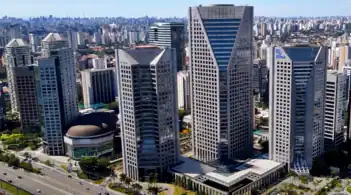
The economy of Brazil is historically the largest in Latin America and the Southern Hemisphere in nominal terms. The Brazilian economy is the second largest in the Americas. The economy is a middle income developing mixed economy. In 2023, according to International Monetary Fund (IMF), Brazil has the 9th largest gross domestic product (GDP) in the world and has the 8th largest purchasing power parity in the world.
In 2022, according to International Monetary Fund (IMF), Brazilian nominal GDP was US$1.894 trillion, the country has a long history of being among the ten largest economies in the world. The GDP per capita was US$8,857 per inhabitant. (Full article...)
Selected economy 13
Portal:Business/Selected economy/13
.jpeg.webp)
The economy of Macau has remained one of the most open in the world since its handover to China in 1999. Apparel exports and gambling-related tourism are mainstays of the economy. Since Macau has little arable land and few natural resources, it depends on mainland China for most of its food, fresh water, and energy imports. Japan and Hong Kong are the main suppliers of raw materials and capital goods. Although Macau was hit hard by the 1997–98 Asian financial crisis and the early 2000s recession, its economy grew approximately 13.1% annually on average between 2001 and 2006. Macau is a full Member of the World Trade Organization. Public security has greatly improved after handover to the People's Republic of China. With the tax revenue from the profitable gambling industry, the Macau government is able to introduce the social welfare program of 15 years of free education to all Macau citizens. In 2015, Macau's economy saw a sharp decrease (-26.4% year-on-year in Q2 2015) due to the reduced spending by visitors from Mainland China since the Anti-corruption campaign under Xi Jinping. (Full article...)
Selected economy 14
Portal:Business/Selected economy/14
The economy of Mexico is a developing mixed-market economy. It is the 12th largest in the world in nominal GDP terms and by purchasing power parity according to the International Monetary Fund. Since the 1994 crisis, administrations have improved the country's macroeconomic fundamentals. Mexico was not significantly influenced by the 2002 South American crisis, and maintained positive, although low, rates of growth after a brief period of stagnation in 2001. However, Mexico was one of the Latin American nations most affected by the 2008 recession with its gross domestic product contracting by more than 6% in that year. (Full article...)
Selected economy 15
Portal:Business/Selected economy/15
China has an upper middle income, developing, mixed, socialist market economy, that incorporates industrial policies and strategic five-year plans. It is the world's second largest economy by nominal GDP, behind the United States, and the world's largest economy since 2016 when measured by purchasing power parity (PPP). Due to a volatile currency exchange rate, China's GDP as measured in dollars fluctuates sharply. China accounted for 19% of the global economy in 2022 in PPP terms, and around 18% in nominal terms in 2022. Historically, China was one of the world's foremost economic powers for most of the two millennia from the 1st until the 19th century. The economy consists of public sector enterprise, state-owned enterprises (SOEs) and mixed-ownership enterprises, as well as a large domestic private sector and openness to foreign businesses in a system. Private investment and exports are the main drivers of economic growth in China; but the Chinese government has also emphasized domestic consumption. (Full article...)
Selected economy 16
Portal:Business/Selected economy/16
The economy of Myanmar is the seventh largest in Southeast Asia. Since the return of civilian rule in 2011, the new government has launched impressive reforms, focused initially on the political system to restore peace and achieve national unity and moving quickly to an economic and social reform program. Despite the tremendous potential that Myanmar's economy possesses, in order for Myanmar to achieve its economic transition, considerable investments will have to be made in infrastructure and developing human capital, and progress made on building institutional capacity, a regulatory environment for the private sector to flourish, and a modern finance sector. Current economic statistics were a huge decline from the economic statistics of Myanmar in the fiscal year of 2020, in which Myanmar’s nominal GDP was $81.26 billion and its purchasing power adjusted GDP was $279.14 billion. The cause of the deterioration in the economy is due to the 2021 coup d’été by the Tatmadaw after they accused the elections to be fraudulent. Myanmar's economy has been experiencing slow growth and advancement ever since the coup d’été in 2021. (Full article...)
Selected economy 17
Portal:Business/Selected economy/17
The economy of Pakistan is classified as a developing economy. It is the 24th-largest in terms of GDP based on purchasing power parity (PPP) and 46th largest in terms of nominal GDP. As of 2023, the country has a population of 232 million people. According to the International Monetary Fund (IMF), on a per capita income basis, Pakistan ranked 161st by GDP (nominal) and 138th by GDP (PPP). (Full article...)
Selected economy 18
Portal:Business/Selected economy/18
The economy of Africa consists of the trade, industry, agriculture, and human resources of the continent. , approximately 1.3 billion people were living in 54 countries in Africa. Africa is a resource-rich continent. Recent growth has been due to growth in sales, commodities, services, and manufacturing. West Africa, East Africa, Central Africa and Southern Africa in particular, are expected to reach a combined GDP of $29 trillion by 2050.
In March 2013, Africa was identified as the world's poorest inhabited continent; however, the World Bank expects that most African countries will reach "middle income" status (defined as at least US$1,025 per person a year) by 2025 if current growth rates continue. There are a number of reasons for Africa's poor economy: historically, even though Africa had a number of empires trading with many parts of the world, many people lived in rural societies; in addition, European colonization and the later Cold War created political, economic and social instability. (Full article...)
Selected economy 19
Portal:Business/Selected economy/19
The economy of Zimbabwe relies on the tertiary sector of the economy, also known as the service sector of the economy, which makes up to 60% of total GDP as of 2017. Zimbabwe has the second largest, by percentage, informal economy in the world, with a score of 60.6%. Agriculture and mining largely contribute to exports. After continuous negative growth between 1997 and 2008, the economy of Zimbabwe has seen rapid but volatile growth, averaging 11% on an end-to-end basis.
The country has reserves of metallurgical-grade chromite. Other commercial mineral deposits include coal, asbestos, copper, nickel, gold, platinum and Iron ore. (Full article...)
Selected economy 20
Portal:Business/Selected economy/20
The economy of Bhutan is based on agriculture and forestry, which provide the main livelihood for more than 60% of the population. Agriculture consists largely of subsistence farming and animal husbandry. Rugged mountains dominate the terrain and make the building of roads and other infrastructure difficult. Bhutan is among the richest by gross domestic product (nominal) per capita in South Asia, at $3,491 as of 2022, but it still places 153rd, and among the poorest in the world. The total gross domestic product is only $2,653 million, and 178th according to IMF.
Bhutan's economy is closely aligned with India's through strong trade and monetary links and dependence on India's financial assistance. Most production in the industrial sector is of the cottage industry type. Most development projects, such as road construction, rely on Indian migrant labour. Model education, social, and environment programs are underway with support from multilateral development organisations. (Full article...)
Selected economy 21
Portal:Business/Selected economy/21
The economy of Iraq is dominated by the oil sector, which has provided about 99.7% of foreign exchange earnings during its modern history. As of 2021, the oil sector provides about 92% of foreign exchange earnings. Iraq's hitherto agrarian economy underwent rapid development following the 14 July Revolution (1958) which overthrew the Hashemite Iraqi monarchy. It had become the third-largest economy in the Middle East by 1980. This occurred in part because of the Iraqi government's successful industrialization and infrastructure development initiatives in the 1970s, which included irrigation projects, railway and highway construction, and rural electrification. (Full article...)
Selected economy 22
Portal:Business/Selected economy/22
The economy of South America comprises approximately 434 million people living in twelve nations and three territories. It encompasses 6 percent of the world's population.
From the 1930s to 1980s, countries of South America used Import Substitution, an economic policy that replaces foreign businesses as well as imports with domestic production. This was a policy made to increase domestic manufacturing. Furthermore, national spending on arms soared during periods of military rule. Increasingly South American countries began to borrow from foreign private banks and international lending institutions, such as the World Bank and the Inter-American Development Bank, to fund existing programs while also trying to expand their economic productivity through investments. However, this policy created a debt crisis in South America.
The continent has fallen farther behind North America over the past two centuries. This can be explained by South America's high concentration on primary commodities as well as the state of the educational system and institutional structure, some of which are still related to its colonial past, others to recent political developments. (Full article...)
Selected economy 23
Portal:Business/Selected economy/23
The economy of Asia comprises about 4.7 billion people (60% of the world population) living in 50 different nations.0 Asia is the fastest growing economic region, as well as the largest continental economy by both GDP Nominal and PPP in the world. Moreover, Asia is the site of some of the world's longest modern economic booms, starting from the Japanese economic miracle (1950–1990), Miracle on the Han River (1961–1996) in South Korea, economic boom (1978–2013) in China, Tiger Cub Economies (1990–2020) in ASEAN, and economic boom in India (1991–present).
As in all world regions, the wealth of Asia differs widely between, and within, states. This is due to its vast size, meaning a huge range of different cultures, environments, historical ties and government systems. The largest economies in Asia in terms of PPP gross domestic product (GDP) are China, India, Japan, Indonesia, Turkey, South Korea, Saudi Arabia, Iran, Thailand, Pakistan and Bangladesh and in terms of nominal gross domestic product (GDP) are Japan, Taiwan, South Korea, China, India, Indonesia, Saudi Arabia, Turkey, Thailand and Iran. (Full article...)
Selected economy 24
Portal:Business/Selected economy/24
.svg.png.webp)
The economy of East Asia comprises 1.6 billion people (20% of the world population) living in six different countries and regions. The region includes several of the world's largest and most prosperous economies: Japan, South Korea, China, Taiwan, Hong Kong, and Macau. It is home to some of the most economically dynamic places in the world, being the site of some of the world's most extended modern economic booms, including the Japanese economic miracle (1950–1990), Miracle on the Han River (1961–1996) in South Korea, the Taiwan miracle in Taiwan (1960–1996) and the Chinese economic miracle (1978–2015) in mainland China.
East Asia's economic prominence has grown significantly in recent years, increasing its importance and influence in Asia and the world economy. Recent developments have led to an expanding cosmopolitan middle class. East Asian countries are vital contributors to central global communications and trade networks, developing relations with other nations, including those of the Western world, making them a significant contributor to the global economy. The region's economic success was referred to as "An East Asian Renaissance" by the World Bank in 2007. (Full article...)
Selected economy 25
Portal:Business/Selected economy/25
The economy of Iceland is small and subject to high volatility. In 2011, gross domestic product was US$12 billion, but by 2018 it had increased to a nominal GDP of US$27 billion. With a population of 387,000, this is $55,000 per capita, based on purchasing power parity (PPP) estimates. The 2008–2011 Icelandic financial crisis produced a decline in GDP and employment that has since been reversed entirely by a recovery aided by a tourism boom starting in 2010. Tourism accounted for more than 10% of Iceland's GDP in 2017. After a period of robust growth, Iceland's economy is slowing down according to an economic outlook for the years 2018–2020 published by Arion Research in April 2018.
Iceland has a mixed economy with high levels of free trade and government intervention. However, government consumption is less than other Nordic countries. Hydro-power is the primary source of home and industrial electrical supply in Iceland. (Full article...)
Selected economy 26
Portal:Business/Selected economy/26
The economy of Greenland is characterized as small, mixed and vulnerable. Greenland's economy consists of a large public sector and comprehensive foreign trade. This has resulted in an economy with periods of strong growth, considerable inflation, unemployment problems and extreme dependence on capital inflow from the Kingdom Government.
GDP per capita is close to the average for European economies, but the economy is critically dependent upon substantial support from the Danish government, which supplies about half the revenues of the Self-rule Government, which in turn employs 10,307 Greenlanders out of 25,620 currently in employment (2015). Unemployment nonetheless remains high, with the rest of the economy dependent upon demand for exports of shrimp and fish. (Full article...)
Selected economy 27
Portal:Business/Selected economy/27
The economy of Canada is a highly developed mixed economy, with the world's tenth-largest economy , and a nominal GDP of approximately US$2.117 trillion. Canada is one of the world's largest trading nations, with a highly globalized economy. In 2021, Canadian trade in goods and services reached $2.016 trillion. Canada's exports totalled over $637 billion, while its imported goods were worth over $631 billion, of which approximately $391 billion originated from the United States. In 2018, Canada had a trade deficit in goods of $22 billion and a trade deficit in services of $25 billion. The Toronto Stock Exchange is the tenth-largest stock exchange in the world by market capitalization, listing over 1,500 companies with a combined market capitalization of over US$3 trillion.
Canada has a strong cooperative banking sector, with the world's highest per-capita membership in credit unions. It ranks low in the Corruption Perceptions Index (14th in 2023) and "is widely regarded as among the least corrupt countries of the world". It ranks high in the Global Competitiveness Report (14th in 2019) and Global Innovation Indexes (15th in 2022). Canada's economy ranks above most Western nations on The Heritage Foundation's Index of Economic Freedom and experiences a relatively low level of income disparity. The country's average household disposable income per capita is "well above" the OECD average. Canada ranks among the lowest of the most developed countries for housing affordability and foreign direct investment. (Full article...)
Selected economy 28
Portal:Business/Selected economy/28
The economy of England is the largest economy of the four countries of the United Kingdom. England's economy is one of the largest and most dynamic in the world, with an average GDP per capita of £34,690. His Majesty's Treasury, led by the Chancellor of the Exchequer, is responsible for developing and executing the government's public finance policy and economic policy. Government involvement is also primarily exercised by the Department for Business and Trade and Department for Science, Innovation and Technology.
Regarded as a highly developed social market economy, it has adopted many free market principles, yet maintains an advanced social welfare infrastructure. England is a highly industrialised country. It is an important producer of textiles and chemical products. England is a leader in the high-tech, chemical and pharmaceutical sectors and in key technical industries, particularly aerospace, the arms industry, and the manufacturing side of the software industry. Although automobiles, locomotives, and aircraft are among England's other important industrial products, a significant proportion of the country's income comes from the City of London and its financial hub, banking, insurance, investment management and other related financial services. The UK technology sector is valued at US$1 trillion, third behind the United States and China, mostly based in England. (Full article...)
Selected economy 29
Portal:Business/Selected economy/29
The economy of the United Kingdom is a highly developed social market economy. It is the sixth-largest national economy in the world measured by nominal gross domestic product (GDP), tenth-largest by purchasing power parity (PPP), and twenty first by nominal GDP per capita, constituting 3.1% of nominal world GDP. By PPP (purchasing power parity) terms, the UK constitutes 2.3% of world GDP.
The United Kingdom has one of the most globalised economies, and comprises England, Scotland, Wales and Northern Ireland. In 2020, the United Kingdom was the fifth-largest exporter in the world and the fifth-largest importer. It also had the third-largest inward foreign direct investment, and the fifth-largest outward foreign direct investment. In 2020, the United Kingdom's trade with the European Union accounted for 49% of the country's exports and 52% of its imports. (Full article...)
Selected economy 30
Portal:Business/Selected economy/30
The economy of Europe comprises about 748 million people in 50 countries. The formation of the European Union (EU) and in 1999 the introduction of a unified currency, the Euro, brought participating European countries closer through the convenience of a shared currency. The European Union is a unique global organisation, an entity forming one of the largest economies in the world. The European Union also “regulates” the global market by the single market. The difference in wealth across Europe can be seen roughly in the former Cold War divide, with some countries breaching the divide (Greece, Portugal, Slovenia, the Czech Republic, Slovakia, Lithuania, Latvia and Estonia). Whilst most European states have a GDP per capita higher than the world's average and are very highly developed, some European economies, despite their position over the world's average in the Human Development Index, are relatively poor. Europe has total banking assets of more than $50 trillion and its Global assets under management has more than $20 trillion.
Throughout this article "Europe" and derivatives of the word are taken to include selected states whose territory is only partly in Europe, such as Turkey, Azerbaijan and Georgia, and states that are geographically in Asia, bordering Europe and culturally adherent to the continent, such as Armenia and Cyprus. (Full article...)
Selected economy 31
Portal:Business/Selected economy/31
The economy of Russia has gradually transformed from a planned economy into a mixed market-oriented economy. It has enormous natural resources, particularly oil and natural gas. It is the world's 11th-largest economy by nominal GDP, and 6th-largest by purchasing power parity (PPP). Due to a volatile currency exchange rate, Russia's GDP as measured in dollars fluctuates sharply. Russia's membership to the WTO was accepted in 2011.
Russia's vast geography is an important determinant of its economic activity, with the country holding a large share of the world's natural resources. It has been widely described as an energy superpower; as it has the world's largest natural gas reserves, 2nd-largest coal reserves, 8th-largest oil reserves, and the largest oil shale reserves in Europe. It is the world's leading natural gas exporter, the 2nd-largest natural gas producer, and the 2nd-largest oil exporter, and producer. Russia's foreign exchange reserves are the world's 4th-largest. It has a labour force of roughly 70 million people, which is the world's 7th-largest. Russia is the world's 3rd-largest exporter of arms. The oil and gas sector accounted up to roughly 40% of Russia's federal budget revenues, and up to 60% of its exports in 2019. Russia has the world's 5th-largest number of billionaires. Russias inequality of household income and wealth remains comparatively high. (Full article...)
Selected economy 32
Portal:Business/Selected economy/32
Australia is a highly developed country with a mixed economy. As of 2023, Australia was the 13th-largest national economy by nominal GDP (gross domestic product), the 19th-largest by PPP-adjusted GDP, and was the 21st-largest goods exporter and 24th-largest goods importer. Australia took the record for the longest run of uninterrupted GDP growth in the developed world with the March 2017 financial quarter. It was the 103rd quarter and the 26th year since the country had a technical recession (two consecutive quarters of negative growth). As of June 2021, the country's GDP was estimated at $1.98 trillion.
The Australian economy is dominated by its service sector, which in 2017 comprised 62.7% of the GDP and employed 78.8% of the labour force. At the height of the mining boom in 2009–10, the total value-added of the mining industry was 8.4% of GDP. Despite the recent decline in the mining sector, the Australian economy had remained resilient and stable and did not experience a recession from 1991 until 2020. (Full article...)
Selected economy 33
Portal:Business/Selected economy/33
The economy of New Zealand is a highly developed free-market economy. It is the 52nd-largest national economy in the world when measured by nominal gross domestic product (GDP) and the 62nd-largest in the world when measured by purchasing power parity (PPP). New Zealand has a large GDP for its population of 5 million, and sources of revenue are spread throughout the large island nation. The country has one of the most globalised economies and depends greatly on international trade, mainly with Australia, China, the European Union, Japan, Singapore, South Korea, and the United States. New Zealand's 1983 Closer Economic Relations agreement with Australia means that the economy aligns closely with that of Australia.
New Zealand's diverse economy has a sizable service sector, accounting for 63% of all GDP activity . Large-scale manufacturing industries include aluminium production, food processing, metal fabrication, wood and paper products. Mining, manufacturing, electricity, gas, water, and waste services accounted for 16.5% of GDP . The primary sector continues to dominate New Zealand's exports, despite accounting for only 6.5% of GDP . The information technology sector is growing rapidly. (Full article...)
Selected economy 34
Portal:Business/Selected economy/34
The economy of Peru is an emerging, mixed economy characterized by a high level of foreign trade and an upper middle income economy as classified by the World Bank. Peru has the forty-seventh largest economy in the world by total GDP and currently experiences a high human development index. The country was one of the world's fastest-growing economies in 2012, with a GDP growth rate of 6.3%. The economy was expected to increase 9.3% in 2021, in a rebound from the COVID-19 pandemic in Peru. Peru has signed a number of free trade agreements with its main trade partners. China became the nation's largest trading partner following the China–Peru Free Trade Agreement signed on 28 April 2009. Additional free trade agreements have been signed with the United States in 2006, Japan in 2011 and the European Union in 2012. Trade and industry are centralized in Lima while agricultural exports have led to regional development within the nation. (Full article...)
Selected economy 35
Portal:Business/Selected economy/35
The economy of Saudi Arabia is the largest in the Middle East and the eighteenth largest in the world. A permanent and founding member of OPEC, Saudi Arabia is also a member of the G20 forum as one of the world's largest economies.
Saudi Arabia reportedly has the third most valuable natural resource reserves in the world, mostly petroleum and natural gas. The kingdom has the second-largest proven petroleum reserves, and the fourth-largest measured natural gas reserves. Saudi Arabia is currently the largest exporter of petroleum in the world, which sees it occasionally referred to as a petrostate in Western media. Other major parts of the economy include refining and chemical manufacturing from the oil reserves, much of which is vertically integrated in the state-owned enterprise, Saudi Aramco.
In 2016, the Saudi government launched its Saudi Vision 2030 program to reduce its dependency on oil and diversify its economic resources. In the first quarter of 2019, Saudi Arabia's budget had its first surplus since 2016. This surplus of $10.10 billion was achieved due to an increase in oil and non-oil revenues. (Full article...)
Selected economy 36
Portal:Business/Selected economy/36
The economy of Kazakhstan is the largest in Central Asia in both absolute and per capita terms. In 2021, Kazakhstan attracted more than US$370 billion of foreign investments since becoming an independent republic after the collapse of the former Soviet Union.
It possesses oil reserves as well as minerals and metals. It also has considerable agricultural potential, with its vast steppe lands accommodating both livestock and grain production. The mountains in the south are important for apples and walnuts; both species grow wild there. Kazakhstan's industrial sector rests on the extraction and processing of these natural resources. (Full article...)
Selected economy 37
Portal:Business/Selected economy/37
The economy of the Philippines is an emerging market, a newly industrialized country and one of the most dynamic in the Asia-Pacific region. As a developing economy, the country is working towards achieving greater industrialization and economic growth. In 2023, the Philippine economy is estimated to be at ₱24.27 trillion ($435.67 billion), making it the world's 34th largest by nominal GDP and 14th largest in Asia according to the International Monetary Fund.
The Philippine economy is transitioning from one based on agriculture to one based more on services and manufacturing. It has experienced significant economic growth and transformation in recent years. With an average annual growth rate of around 6 percent since 2010, the country has emerged as one of the fastest-growing economies in the world. The Philippines is a founding member of the United Nations, Association of Southeast Asian Nations, Asia-Pacific Economic Cooperation, East Asia Summit and the World Trade Organization. The Asian Development Bank (ADB) is headquartered in the Ortigas Center located in the city of Mandaluyong, Metro Manila.
The country's primary exports include semiconductors and electronic products, transport equipments, garments, chemical products, copper, nickel, abaca, coconut oil, and fruits. Its major trading partners include Japan, China, the United States, Singapore, South Korea, the Netherlands, Hong Kong, Germany, Taiwan, and Thailand. The Philippines has been named as one of the Tiger Cub Economies, alongside Indonesia, Malaysia, Vietnam, and Thailand. However, major problems remain, mainly related to alleviating the wide income and growth disparities between the country's different regions and socioeconomic classes, reducing corruption, and investing in the infrastructure necessary to ensure future growth. (Full article...)
Selected economy 38
Portal:Business/Selected economy/38
The economy of Argentina is the second-largest national economy in South America, behind Brazil. Argentina is a developing country with a highly literate population, an export-oriented agricultural sector, and a diversified industrial base.
Argentina benefits from rich natural resources. Argentina's economic performance has historically been very uneven, with high economic growth alternating with severe recessions, particularly since the late twentieth century. Income maldistribution and poverty have increased since this period. Early in the twentieth century, Argentina had one of the ten highest per capita GDP levels globally. It was on par with Canada and Australia, and had surpassed both France and Italy.
Argentina's currency declined by about 50% in 2018 to more than 38 Argentine pesos per U.S. Dollar. As of that year, it is under a stand-by program from the International Monetary Fund. In 2019, the currency fell further by 25%. In 2020, it fell by 90%, in 2021, 68%, and a further 52% in 2022 (until July 20). (Full article...)
Selected economy 39
Portal:Business/Selected economy/39
The economy of the Czech Republic is a developed export-oriented social market economy based in services, manufacturing, and innovation that maintains a high-income welfare state and the European social model. The Czech Republic participates in the European Single Market as a member of the European Union, and is therefore a part of the economy of the European Union. It uses its own currency, the Czech koruna, instead of the euro. It is a member of the Organisation for Economic Co-operation and Development (OECD). The Czech Republic ranks 16th in inequality-adjusted human development and 24th in World Bank Human Capital Index, ahead of countries such as the United States, the United Kingdom or France. It was described by The Guardian as "one of Europe's most flourishing economies".
The industry sector accounts for 37% of the economy, while services account for 61% and agriculture for 2%. The principal industries are high tech engineering, electronics and machine-building, steel production, transportation equipment (automotive, rail and aerospace industry), chemicals, advanced materials and pharmaceuticals. The major services are research and development, ICT and software development, nanotechnology and life sciences. Its main agricultural products are cereals, vegetable oils and hops. (Full article...)
Selected economy 40
Portal:Business/Selected economy/40
The economy of Greece is the 53rd largest in the world, with a nominal gross domestic product (GDP) of $242.385 billion per annum. In terms of purchasing power parity, Greece is the world's 54th largest economy, at $416.969 billion per annum. As of 2022, Greece is the sixteenth-largest economy in the European Union. According to the International Monetary Fund's figures for 2023, Greece's GDP per capita is $23,173 at nominal value and $39,864 at purchasing power parity.
Greece is a developed country with an economy based on the service (80%) and industrial sectors (16%), with the agricultural sector contributing an estimated 4% of national economic output in 2017. Important Greek industries include tourism and shipping. With 31.3 million international tourists in 2019, Greece was the 7th most visited country in the European Union and 13th in the world. marking a steady increase from 18 million tourists in 2013. The Greek Merchant Navy is the largest in the world, with Greek-owned vessels accounting for 21% of global deadweight tonnage as of 2021; The total capacity of the Greek-owned fleet has increased by 45.8% compared to 2014. The increased demand for international maritime transportation between Greece and Asia has resulted in unprecedented investment in the shipping industry. (Full article...)
Selected economy 41
Portal:Business/Selected economy/41
The economy of Poland is an industrialized, mixed economy with a developed market that serves as the sixth-largest in the European Union by nominal GDP and fifth-largest by GDP (PPP). Poland boasts the extensive public services characteristic of most developed economies. Since 1988, Poland has pursued a policy of economic liberalization but retained an advanced public welfare system. This includes universal free public healthcare and education (including tertiary), extensive provisions of free public childcare and parental leave. The country is considered by many to be a successful post-communist state. It is classified as a high-income economy by the World Bank, ranking 21st worldwide in terms of GDP (PPP), 21st in terms of GDP (nominal), and 21st in the 2023 Economic Complexity Index.
The largest component of Poland's economy is the service sector (62.3.%), followed by industry (34.2%) and agriculture (3.5%). Following the economic reform of 1989, Poland's external debt has increased from $42.2 billion in 1989 to $365.2 billion in 2014. Poland shipped US$224.6 billion worth of goods around the globe in 2017, while exports increased to US$221.4 billion. The country's top export goods include machinery, electronic equipment, vehicles, furniture, and plastics. Poland was the only economy in the EU to avoid a recession through the 2007–08 economic downturn. (Full article...)
Selected economy 42
Portal:Business/Selected economy/42
The economy of the Netherlands is the 18th largest in the world in 2021 (in terms of Gross domestic product; GDP) according to the World Bank and the International Monetary Fund. Its GDP per capita at purchasing power parity was estimated at $72,973 in the fiscal year 2023, which makes it one of the highest-earning nations in the world.
The Netherlands has had steady natural gas resources since 1959, when a wellspring was discovered. Currently the Netherlands accounts for more than 25% of all natural gas reserves in the European Union. Over the following decades, the sale of natural gas generated a significant rise in revenue for the Netherlands. However, the unforeseen consequences of the country's energy wealth originally impacted the competitiveness of other sectors of the economy, leading to the theory of Dutch disease, after the discovery of the vast Groningen gas field. (Full article...)
Selected economy 43
Portal:Business/Selected economy/43
The economy of Germany is a highly developed social market economy. It has the largest national economy in Europe, the third-largest by nominal GDP in the world (almost tied with Japan), and fifth by GDP (PPP). Due to a volatile currency exchange rate, Germany's GDP as measured in dollars fluctuates sharply. In 2017, the country accounted for 28% of the euro area economy according to the International Monetary Fund (IMF). Germany is a founding member of the European Union and the Eurozone.
In 2016, Germany recorded the highest trade surplus in the world, worth $310 billion. This economic result made it the biggest capital exporter globally. Germany is one of the largest exporters globally with $1810.93 billion worth of goods and services exported in 2019. The service sector contributes around 70% of the total GDP, industry 29.1%, and agriculture 0.9%. Exports accounted for 41% of national output. The top 10 exports of Germany are vehicles, machinery, chemical goods, electronic products, electrical equipment, pharmaceuticals, transport equipment, basic metals, food products, and rubber and plastics. The economy of Germany is the largest manufacturing economy in Europe, and it is less likely to be affected by a financial downturn. Germany conducts applied research with practical industrial value and sees itself as a bridge between the latest university insights and industry-specific product and process improvements. It generates a great deal of knowledge in its own laboratories. (Full article...)
Selected economy 44
Portal:Business/Selected economy/44 The economy of Denmark is a modern high-income and mixed economy.
The economy of Denmark is dominated by the service sector with 80% of all jobs, whereas about 11% of all employees work in manufacturing and 2% in agriculture. The nominal gross national income per capita was the ninth-highest in the world at $68,827 in 2023. (Full article...)
Selected economy 45
Portal:Business/Selected economy/45
The economy of Sweden is a highly developed export-oriented economy, aided by timber, hydropower, and iron ore. These constitute the resource base of an economy oriented toward foreign trade. The main industries include motor vehicles, telecommunications, pharmaceuticals, industrial machines, precision equipment, chemical goods, home goods and appliances, forestry, iron, and steel. Traditionally, Sweden relied on a modern agricultural economy that employed over half the domestic workforce. Today Sweden further develops engineering, mine, steel, and pulp industries, which are competitive internationally, as evidenced by companies like Ericsson, ASEA/ABB, SKF, Alfa Laval, AGA, and Dyno Nobel.
Sweden is a competitive open mixed economy. The vast majority of Swedish enterprises are privately owned and market-oriented. There is also a strong welfare state, with public-sector spending accounting up to three-fifths of GDP. In 2014, the percent of national wealth owned by the government was 24%. (Full article...)
Selected economy 46
Portal:Business/Selected economy/46
The economy of South Africa is the second largest in Africa (after Nigeria) and the most industrialized, technologically advanced, and diversified economy in Africa. South Africa is an upper-middle-income economy, one of only eight such countries in Africa. Following 1996, at the end of over twelve years of international sanctions, South Africa's nominal gross domestic product (GDP) almost tripled to a peak of US$416 billion in 2011. In the same period, foreign exchange reserves increased from US$3 billion to nearly US$50 billion, creating a diversified economy with a growing and sizable middle class, within two decades of ending apartheid.
Although the natural resource extraction industry remains one of the largest in the country with an annual contribution to the GDP of US$13.5 billion, the economy of South Africa has diversified since the end of apartheid, particularly towards services. In 2019, the financial industry contributed US$41.4 billion to South Africa's GDP. In 2021, South Africa-based financial institutions managed more than US$1.41 trillion in assets. The total market capitalization of the Johannesburg Stock Exchange is US$1.28 trillion as of October 2021. (Full article...)
Selected economy 47
Portal:Business/Selected economy/47
The economy of Morocco is considered a relatively liberal economy, governed by the law of supply and demand. Since 1993, in line with many Western world changes, Morocco has followed a policy of privatisation of certain economic sectors which used to be in the hands of the government. Morocco has become a major player in African economic affairs, and is the 5th largest African economy by GDP (PPP). The World Economic Forum placed Morocco as the most competitive economy in North Africa, in its African Competitiveness Report 2014–2015.
The economic system of the country is characterised by a large opening towards the outside world. In the Arab world, Morocco has the second-largest non-oil GDP, behind Egypt, as of 2017. Since the early-1980s, the Moroccan government has pursued an economic programme toward accelerating economic growth with the support of the International Monetary Fund, the World Bank, and the Paris Club of creditors. From 2018, the country's currency, the Moroccan dirham, is fully convertible for current account transactions; reforms of the financial sector have been implemented; and state enterprises are being privatised. (Full article...)
Selected economy 48
Portal:Business/Selected economy/48

The economy of Monaco is reliant on tourism and banking. Monaco, situated on the French coast of the Mediterranean Sea, is a popular resort, attracting tourists to its casino and pleasant climate.
The Principality has successfully sought to diversify into services and small, high-value-added, nonpolluting industries. The state has no income tax and low business taxes and thrives as a tax haven both for individuals who have established residence and for foreign companies that have set up businesses and offices. The state retains monopolies in a number of sectors, including gambling, tobacco, the telephone network, and the postal service. (Full article...)
Selected economy 49
Portal:Business/Selected economy/49
The economy of Italy is a highly developed social market economy. It is the third-largest national economy in the European Union, the second-largest manufacturing industry in Europe (7th-largest in the world), the 8th-largest economy in the world by nominal GDP, and the 12th-largest by GDP (PPP). Italy is a founding member of the European Union, the Eurozone, the OECD, the G7 and the G20; it is the eighth-largest exporter in the world, with $611 billion exported in 2021. Its closest trade ties are with the other countries of the European Union, with whom it conducts about 59% of its total trade. The largest trading partners, in order of market share in exports, are Germany (12.5%), France (10.3%), the United States (9%), Spain (5.2%), the United Kingdom (5.2%) and Switzerland (4.6%).
In the post-World War II period, Italy saw a transformation from an agricultural-based economy which had been severely affected by the consequences of the World Wars, into one of the world's most advanced nations, and a leading country in world trade and exports. According to the Human Development Index, the country enjoys a very high standard of living. According to The Economist, Italy has the world's 8th highest quality of life. Italy owns the world's third-largest gold reserve, and is the third-largest net contributor to the budget of the European Union. Furthermore, the advanced country private wealth is one of the largest in the world. In terms of private wealth, Italy ranks second, after Hong Kong, in private wealth to GDP ratio. (Full article...)
Selected economy 50
Portal:Business/Selected economy/50
The economy of Nigeria is a middle-income, mixed economy and emerging market with expanding manufacturing, financial, service, communications, technology, and entertainment sectors. It is ranked as the 31st-largest economy in the world in terms of nominal GDP, the largest in Africa and the 27th-largest in terms of purchasing power parity.
Nigeria has the largest economy in Africa. The country's re-emergent manufacturing sector became the largest on the continent in 2013, and it produces a large proportion of goods and services for the region of West Africa. Nigerias debt-to-GDP ratio was 36.63% in 2021 according to the IMF. (Full article...)
Usage
The layout design for these subpages is at Template:Selected economy.
- Add a new Selected article to the next available subpage.
- The "blurb" for all selected articles should be approximately 10 lines, for appropriate formatting in the portal main page.
- Update "max=" to new total for its {{Random portal component}} on the main page.
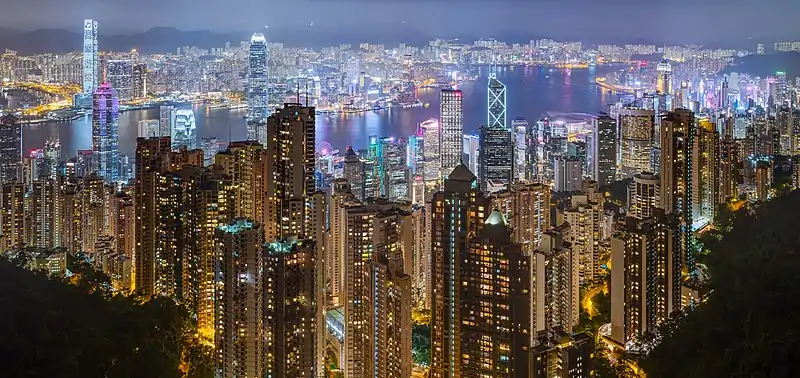

.jpg.webp)
.jpg.webp)
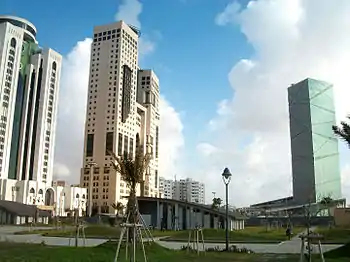
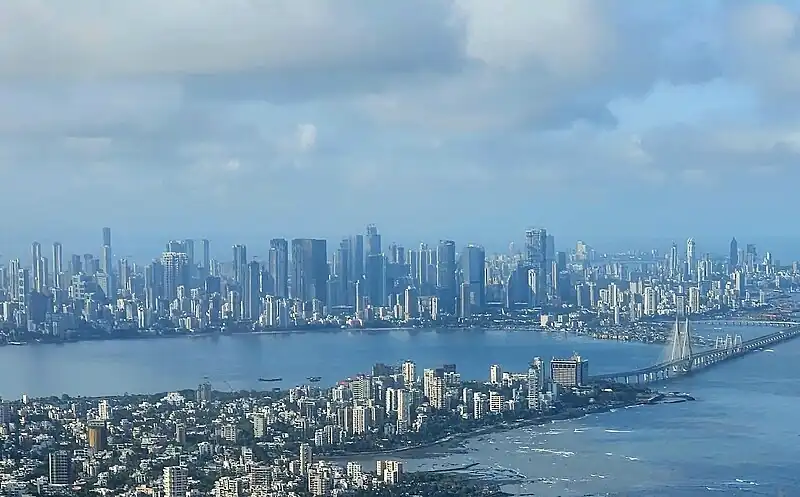

.jpg.webp)
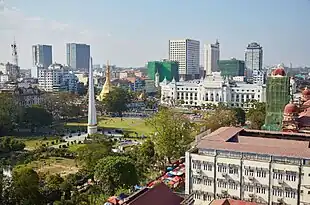
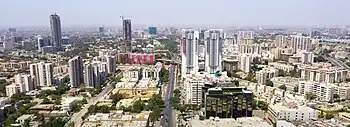


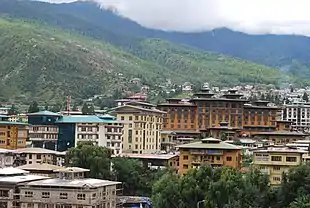
._U.S._and_Coalition_forces_guard_the_Khawr_Al_Amaya_Oil_Platform.jpg.webp)
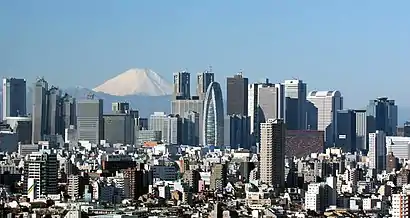


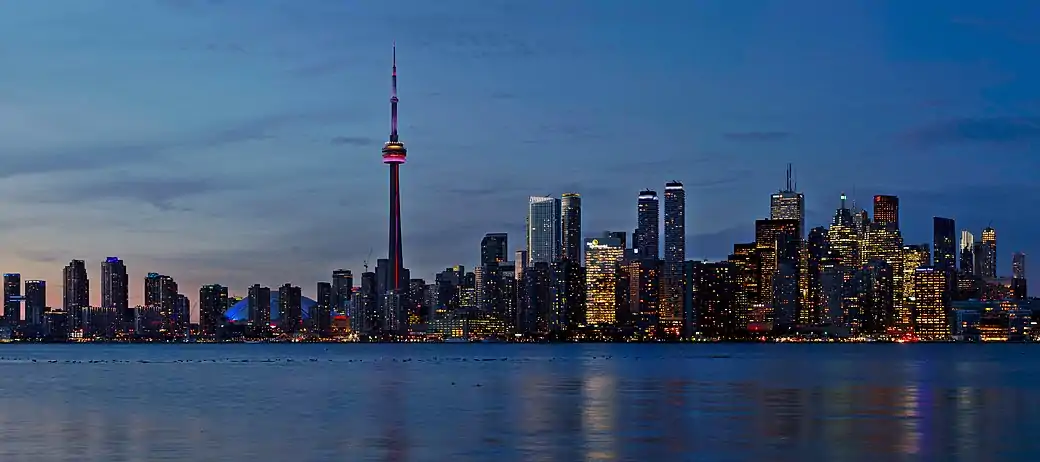
.jpg.webp)
.jpeg.webp)
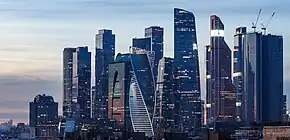
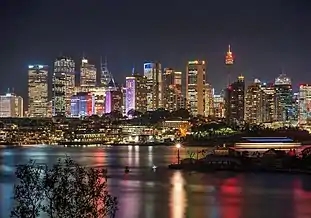



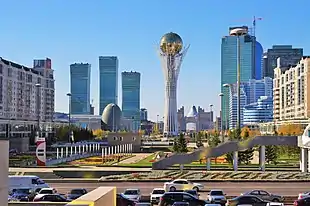

.jpg.webp)
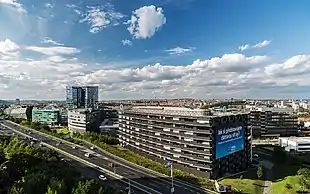
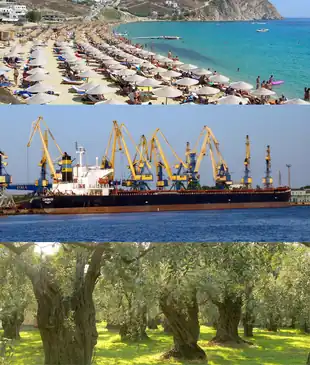
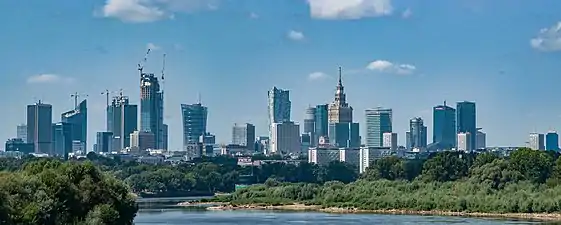
.jpg.webp)
